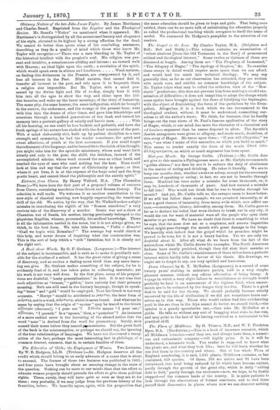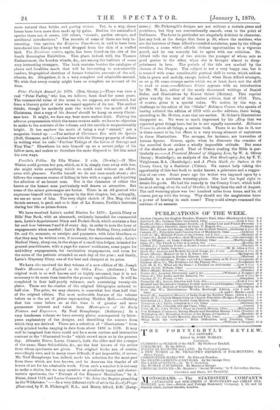The Flora of Middlesex. By IL Trimen, 31.11, and W.
T. Thisleton Dyer, B.A. (Ilardwicke.)—This is a book of immense research, which all Middlesex botanists—and they are, and always have boon, a numer- ous and enthusiastic company—will highly prize. It is, it will be understood, a botanist's book. The reader is supposed to know what the plants are, and what they look like ; hero he will learn whether he can find them in the country and where. Out of the whole Flora of England, numbering, it is said, 1,435 plants, Middlesex contains, or has contained, 859 species. Of those, 768 are native and 91 have been introduced, this total being reduced by 58 which have become extinct, partly through the growth of the great city, which is daily "adding field to field," partly through the enclosure—now, we hope, to be finally stepped—of the common lauds of the county. It is quite pathetic to look through the observations of former searchers, and to find them record their discoveries in places where now we can discover nothing
more natural than bricks and paving stones. Yet, in a way, these losses have been more than made up by gains. Besides the naturalized species there are, it seems, 120 others, "casuals, garden escapes, and accidental introductions." The records of some of these are very in- teresting. One species, the Erigeron Canadensis, is said to have been introduced into Europe by a seed dropped from the skin of a stuffed bird. The Nicotiana rustica, again, has been found on the site of the South Kensington Exhibition. This place, indeed, with the Thames Embankment, the London wharfs, &c., are among the habitats of some very interesting strangers. The book contains besides the catalogue of plants and localities much that will be interesting to non-scientific readers, biographical sketches of former botanists, accounts of the soil, climate, dm. Altogether, it is a very complete and admirable manual. We wish that every county might have as complete an account of its flora.











































 Previous page
Previous page